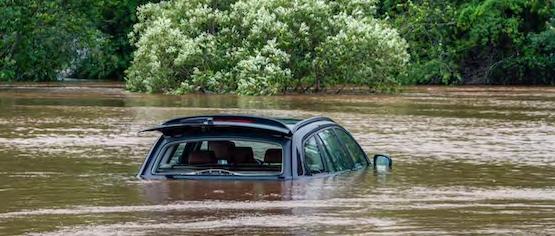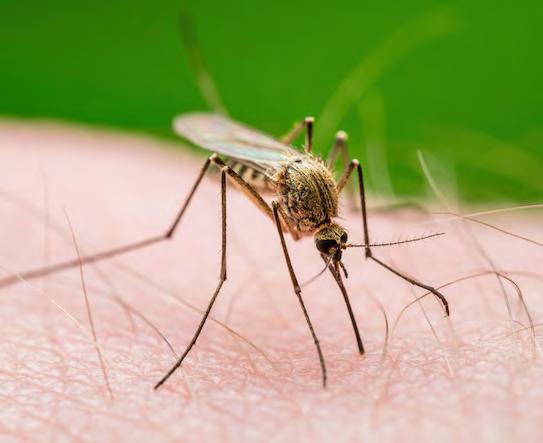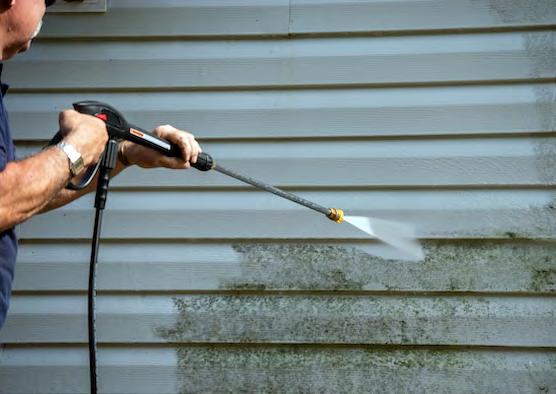Zone Comfort



Canada’s summers can become hot and humid in some regions. While warm weather is often anticipated, extremely high temperatures can have adverse effects.
It is important to recognize the signs of heat illness. Symptoms of heat exhaustion include elevated body temperature, confusion, muscle cramps, dizziness, nausea, headache, rapid breathing and heartbeat, and reduced urination.
Heat stroke is a more severe condition and constitutes a medical emergency. Its symptoms can overlap with those of heat exhaustion and include high body temperature, confusion, lack of coordination, dizziness, and fainting. In classic heat stroke, there may be no sweating and the person’s skin may appear very hot and red. However, in exertional heat stroke, which is associated with exercise, profuse sweating may occur.
If you or someone else displays any of these symptoms, seek help immediately. Contact 911 or your local emergency number if the affected individual has a high body temperature and is unconscious, confused, or not sweating. While awaiting assistance,

cool the individual by moving them to a cooler location, applying cold water to large areas of their skin or clothing, and fanning them as much as possible.
To remain cool and safe, consider the following tips recommended by Health Canada:
• Take breaks in cool locations such as a shaded area, swimming facility, or air-conditioned places like shopping malls, grocery stores, or public libraries. At home, take cool showers or baths to stay refreshed.
• Keep your home cool. If you have an air conditioner with a thermostat, set it to a comfortable level between 22 and 26°C. With a window air conditioner, focus on cooling one room for heat relief. During the day, close awnings, curtains, or blinds to block the sun. Open windows at night to let cooler air inside if it is safe.
• Prepare meals that do not require oven cooking, opting for salads, sandwiches, or grilling outdoors in the shade.
• Monitor yourself and those around you. Regularly check on neighbours, friends, and older family members, particularly those with chronic illnesses
• Avoid distracted driving
• Summer bike safety tips
• Road trips with an EV
• Why not try a staycation?
• Coping with workplace bullies
• Menopause stigma in the workplace
• Low back pain challenges
• What you didn’t know about forest fires
• Flash flood advice
• Summer heat and your pet
• Handling pesky mosquitoes
• A few words about fireworks
• Ways to avoid procrastination
• How to use a pressure washer
• Safety Meeting: Ticks

or who live alone, to ensure they are cool and hydrated. Never leave individuals or pets in parked vehicles or direct sunlight.
For additional tips on staying cool this summer, visit canada.ca/health.

Publisher: Stefan Dreesen
H&S Communication Specialists: Alan Haycroft | Liz Slobodin | Kevin Harvey
Editor: Kate Van Hoof-Peeren
Contributing Writer: Bryden Winsby
TOLL FREE: 1-888-655-4800
info@smartworkplace.ca www.smartworkplace.ca
(NC) Picture this: You’re on the road with your seatbelt buckled and phone out of sight because you’re a responsible driver. You’ve safely stopped at a red light when you hear a text message ding on your phone. You check the message and punch out a quick one-word reply. No harm done. Light turns green and off you go.
But did you know that by writing out that one word, you may be breaking the law?
All provinces and territories in Canada have bans on using cellphones or hand-held electronic devices while driving. Penalties can include fines and demerit points.

What can you do legally while driving?
• View the display screens of GPS units.
• Use a hands-free wireless communication device if you absolutely must take a call. Even with these exceptions, it’s wise to reduce distractions from your phone or other devices as much as possible. According to CAA, you’re 23 times more likely to be involved in a collision if you text while driving and four times more likely if you talk on a phone.
Focused driving helps save lives and maintains your good driving record. Here are some ways you can reduce electronic distractions:
Know your route: Map out a route before driving, or use the voice navigation feature on your GPS or map app.
Set a playlist: Decide before you drive what music to listen to. If you are travelling with others, designate a DJ in charge of setting the vibe.
Turn off notifications: Put your phone on vibrate to limit incoming distractions. Remember, there’s nothing so important it can’t wait until after the car ride is over.

(NC) For many of us, summer is the perfect season to dust off our bikes and get back on the road. Biking is a great way to stay active, reduce your carbon footprint and enjoy the outdoors. But it’s important to stay aware of the risks while you’re out on the road or path.
Here are a few tips to keep bike safety top of mind:
Wear proper gear. Having a helmet that’s fitted properly is essential to protecting your head and is one of the most important steps you can take to minimize the risk of injuries. Avoid wearing flip flops and open-toe shoes that could get caught on your pedals or spokes—opt for footwear that offers more support and coverage. Bike shops will help fit you correctly.
Get a proper bike fit. Having a bike set up to fit your body will make riding much easier and more efficient and can help prevent pain and soreness. Perform a pre-ride check. Before heading out, perform a quick bike check. Make sure tires are properly inflated, brakes are functioning, chains are lubricated and gears shift smoothly.
This can prevent mechanical issues that could lead to accidents.
Know the rules. Ride with traffic and obey all road signs. Closely watch all cars in front of you so you can anticipate what they’re going to do and use appropriate hand signals for turns when sharing the road with cars.
Stay visible. Wear bright or reflective clothing, especially for rides in the early morning or late evening. Equip your bike with front and rear lights, as well as reflectors on the pedals and wheels.
Hydrate properly. Riding in the summer heat can quickly lead to dehydration. Carry a water bottle and take regular breaks to hydrate when you need to. Consider adding electrolytes to your water to replace the salts lost through sweat.
Keep your bike protected. Protecting your bike needs to stay top of mind even when your bike isn’t on the road. When keeping your bike locked away for winter or day-to-day storage, it is important to keep it protected in the event it’s stolen or damaged.
NC - Taking a road trip can be exciting, but like most trips it requires a bit of preparation, especially if you plan on using an electric vehicle. Here are some tips to consider for a smooth and enjoyable journey this summer.
It’s important to be realistic about your EV’s range, especially if carrying extra luggage or driving in hilly or cold areas. Before hitting the road, map out your route and familiarize yourself with your car’s driving range. Factors like your speed, air conditioning use and even the weather can affect your battery life and how often you should stop. Locating charging points and their availability in advance means you won’t be scrambling to find a charging station or stuck on the road with a dead battery. Look for apps that can help you plan your charging stops. Some apps or even your EV’s navigation can check for fast chargers along your route and near your destination.
Whenever possible, choose accommodations that offer charging stations and charge your car overnight so you can start each day with a full battery, reducing the need for frequent stops. Don’t leave your EV plugged in longer than needed—this helps others and protects your battery.
Make sure your car is ready to face any
weather conditions or delays that may arise. While electric cars may require less maintenance, consider having a professional look at your tires, brakes and battery to ensure they’re in good condition before your trip.
Always stay prepared by having an emergency roadside kit at your disposal. Important items to include in the kit are a power bank, flashlight, blankets, matches and candles, bottled water, dry food and a first aid kit. Know how to contact roadside assistance for EVs.
Here are a few more tips:
• Drive efficiently. Use regenerative braking and avoid rapid acceleration to extend range. Use eco mode if your EV has it.
• Monitor battery levels. Don’t let your battery drop below 10–15% unless you’re near a charger and keep an eye on realtime range estimates.
• Stay informed: Watch for road closures or detours that could affect your charging plan. Have a backup charging station in mind.
• Find out about Local EV infrastructure, if you plan to visit other provinces. Some regions may have fewer charges or different payment systems.

Make the most of your next
You can enjoy a fantastic vacation without leaving home. Our country, with its landscapes, cities, and cultural heritage, offers many staycation options. Explore local attractions, create a backyard oasis or take a road trip.
Here are some tips for planning the perfect staycation.
Set the scene at home. Transform your home into a retreat. Think cozy movie nights, spa vibes in the bathroom or outdoor dining under string lights. Consider what helps you unwind and bring that into your space.
Plan local adventures. Act like a tourist in your own city by visiting museums, hiking trails, beaches or even that new restaurant you’ve been eyeing. Planning a few offthe-beaten-path adventures can make your staycation feel fresh and exciting. However, remember that forest fires have already made quite the impact in many parts of our country and will unfortunately get worse as the summer progresses. If you live close to these areas, keep an eye on the news and weather reports. Avoid “trauma tourism”. There is no need to check out the devastation and loss of others.
Create a flexible budget. Even though you’re staying close to home, expenses can still add up if you’re not careful. Set a budget to keep things in check, but make sure to leave some wiggle room for spontaneous fun.
A great staycation is all about balance, relaxation, adventure and peace of mind. With the right plans in place, you can fully unwind and have fewer things to worry about while you’re in staycation mode.

Workplace bullying continues to be a serious problem that can harm the mental, physical and financial health of the person or group being abused. It has been estimated that in Canada, 1 worker in 6 has been bullied and 1 in 5 has witnessed a co-worker being bullied.
Although job-related bullying can include physical abuse or the threat of abuse, it usually results in psychological rather than physical harm. It’s a repeated pattern of intentional behaviour that causes the victim to be intimidated, offended, degraded or humiliated. Examples include repeated verbal aggression or insults, calling someone derogatory names, public shaming or inappropriate comments or actions related to a person’s gender, age, ethnicity, appearance or religion.
There can be a fine line between strong management and bullying. Comments that are objective and intended to provide constructive feedback are not usually considered bullying but rather are intended to assist the employee with their work.
Bullying is not:
• Enforcing workplace policies and procedures.
• Evaluating or measuring performance.
• Providing constructive feedback.
• Denying training or leave requests with good reason.
• Discussing disciplinary action in private.
• Dismissing, suspending, demoting or reprimanding with just cause.
Dealing with legitimate cases of bullying can be difficult. Many jurisdictions have defined bullying separately in health and safety legislation or have included it with behaviours associated with harassment or violence.
If you feel that you are being bullied, the Canadian Centre for Occupational Health and Safety suggests:
• Firmly tell the person that his or her behaviour is not acceptable and ask them to stop. You can ask a person you trust, such as supervisor or union member to be with you when you approach the person.
• Keep a factual journal or diary of events, recording the date, time and what happened in as much detail as possible, the names of witnesses, and the outcome of the event.
• Keep copies of any letters, memos, e-mails, etc., received from the person.
• Report the bullying or harassment to the person identified in your workplace policy, your supervisor, or a delegated manager. If your concerns are minimized, proceed to the next level of management.
• Do not retaliate. You may end up looking like the perpetrator and will most certainly cause confusion for those responsible for evaluating and responding to the situation.
(NC) Menopause is a natural stage of a woman’s life. Yet, for many, it arrives with symptoms that can be disruptive and, at times, overwhelming. Hot flashes and night sweats—known as vasomotor symptoms (VMS)—aren’t just punchlines or passing discomforts. They are real physiological responses to hormonal changes that affect the body’s ability to regulate temperature and blood flow. These symptoms can lead to challenges like sleep disruption, forgetfulness, anxiety and mood shifts.
With an estimated two million women currently navigating menopause in the workplace, the ripple effects of burdensome symptoms are hard to ignore. Symptoms such as VMS, fatigue and difficulty concentrating not only affect day-to-day comfort but can also influence job satisfaction and long-term career trajectories.
A report from the Menopause Foundation of Canada estimates that unmanaged menopause costs our economy about $3.5 billion every year. Much of that loss comes from reduced income and increased absenteeism among women experiencing symptoms like hot flashes and night sweats.
Despite how common these experiences are, nearly 40 percent of working women say there’s still a stigma around talking about menopause at work. As a result, many feel compelled to “just deal with it,” even as symptoms disrupt their sleep, focus, productivity and well-being.
Menopause is as natural as puberty or pregnancy, and there should be no reason for shame or embarrassment. By talking about menopause more openly and frequently, we can create more inclusive personal and professional environments where women feel empowered to seek supports that help them perform at their best, no matter their stage of life.
Curious to learn more? Explore menopausefoundationcanada.ca
(NC) Every summer, Canadians brace for wildfire season. A dry spring can set the stage for devastating blazes that can displace residents and destroy communities. Fire is a powerful force that we need to respect and understand if we’re to keep people safe and protect our natural environment. For instance, did you know:
Fire is important for the health of forests. It’s an essential process that renews the land—in fact, many ecosystems rely on fire to stay healthy. Fire clears tree-shaded space to make room for plants that require more sun, while recycling nutrients and regenerating the soil. It helps produce more biodiversity by encouraging a greater variety of habitats. Some plants, like the Douglas Fir, can only reproduce with the help of fires.
Preventing fire can make it worse. Controlling and preventing fire is crucial for keeping many communities safe. But if a forest goes too long without a fire, when one does begin, it will be much more destructive, since there’s much more fuel available.
Fire seasons are getting worse around the world, with hotter, drier summers making lightning strikes more likely, and forests more flammable. Canada experienced record-breaking fires in 2023, when 18.4 million hectares were burned.
The negative effects spread much further than the forest. The smoke from wildfires can travel thousands of kilometers and causes serious health impacts wherever it blows. Wildfires also release huge quantities of carbon back into the atmosphere, while destroying the trees that would help filter it and other toxins. It means that fires require a global response. For example, Canadian firefighters and organizations are actively supporting Bolivia in its fight against wildfires, both through direct assistance and training programs. Canadian organizations like GlobalMedic and Firefighters Without Borders have been providing equipment, training, and expertise to Bolivian firefighters.

Just as there are numerous causes for low back pain, there is no single, guaranteed way to make it go away.
The causes can be related directly to work, or they might be the result of other factors.
Nearly everyone experiences lower back pain at some point in their lives. It can range from mild to severe. In most cases, it’s temporary, but long-lasting (chronic) pain in the lumbar region is also common. In extreme cases it can be difficult or impossible to walk, sleep, work or do everyday activities.
Low back pain often results from a strain injuring muscles or tendons. Other causes include arthritis, structural problems and disk injuries.
Many cases of mild to moderate lower back pain get better with rest, ice and over-the-counter pain relievers. After a few days of rest, a person should be able to get back to normal activities. Staying active increases blood flow to the area and helps with healing.
If the pain is severe and/or happens after a traumatic accident, such as a fall, you should seek medical treatment as soon as possible.
Most people with back strains and sprains recover and don’t have long-term health
issues — but many will have another episode within a year.
Someone with degenerative conditions such as arthritis and osteoporosis can have symptoms that get worse over time.
In cases where a low back pain has required time away from your job, it might be necessary to make changes at work.
Talk to your supervisor or human resources department. They may have good ideas on how you can protect your back at work. Some companies have experts who can suggest different tools or ways to do your job.
You might need to develop a gradual return-to-work plan. Be honest about what you feel you can and cannot do. If you need it, your doctor can give you a prescription for shorter work days or fewer duties.
If you know parts of your job are putting stress on your back, ask if there are other ways you can do those jobs. Or ask if someone else could take over that work. Follow-up care is a key part of your treatment and safety. Be sure to make and go to all appointments and call healthcare advice line (811 in most provinces and territories) if you are having problems. It’s also a good idea to know your test results and keep a list of the medicines you take.
As temperatures soar during the summer months, our furry companions are especially vulnerable to heat-related illnesses. Pets can’t regulate their body temperature as efficiently as humans, making it crucial to take extra precautions. Here are a few tips to keep your pet cool, comfortable, and safe when the heat is on.
Never leave pets in a parked car. Even with windows cracked, temperatures inside a car can rise dangerously high in minutes. Heatstroke can occur quickly and can be fatal.
Avoid midday walks. Walk your pet early in the morning or after sunset when temperatures are cooler.
Check the pavement. If it’s too hot for your hand, it’s too hot for their paws. Consider little paw booties, like what you might use during the winter months.
Provide shade. If your pet must be outside, ensure they have access to shaded areas.
Hydration is key. Keep bowls filled with clean, cool water at all times. Carry a collapsible bowl and water bottle on walks or trips.
Use wet towels. Place damp towels on the floor for your pet to lie on.
Grooming and coat care. Regular brushing helps remove excess fur and improve air circulation. Avoid shaving double-coated breeds. Shaving can make your pet more vulnerable to heat and sunburn.
If you are travelling with your pet, plan for frequent breaks in shared areas and bring plenty of water and cooling supplies. Never leave your pet unattended in unfamiliar or hot environments.
Watch for signs of heatstroke. Be alert for:
• Excessive panting or drooling.
• Lethargy or confusion.
• Vomiting or diarrhea.
• Bright red gums or tongue.
If you suspect heatstroke, move your pet to a cool area, offer water, and contact a vet immediately.

Flash floods can be caused by many things but are usually due to extremely heavy rainfall from thunderstorms. Other causes include dam or levee breaks, or mudslides.
The intensity of the rainfall, the location and distribution of the rainfall, the land use and topography, vegetation types, soil type, and soil water-content all determine just how quickly flash flooding may occur. Floods can occur in any region, rural or urban, at virtually any time of the year and have affected hundreds of thousands of Canadians over the years.
Flash flooding occurs so quickly that people are caught off-guard. The situation may become dangerous if people encounter high, fast-moving water while traveling. If people are at their homes or businesses, the water may rise quickly and trap them, or cause damage to the property without them having a chance to protect the property. Here are a few tips to keep in mind if you find yourself in a flash flood situation:
• Move immediately to higher ground or stay on high ground.
• Check the media for emergency information and follow instructions from public safety officials. If advised to evacuate, do so immediately.
• Do not walk through flowing water. Most drownings occur during flash floods: 15 cm of swiftly moving water can knock you off your feet.
• Remember the phrase: “Turn Around, Don’t Drown!” Don’t drive through flooded roads. Cars can be swept away in only 60 cm of moving water. If your
vehicle is trapped in rapidly moving water, stay in the vehicle. If the water is rising inside the vehicle, seek refuge on the roof.
• Do not drive around road barriers. Roads and bridges may be washed out or structurally unsound.
• If told to shelter in place, listen to local television or radio for updates. Conditions may change quickly, so be prepared to evacuate.
• Stay away from downed utility wires. Always assume a downed power line is live. Electrocution is also a serious danger during floods as electrical currents can travel through water.
• Stay out of damaged buildings and away from affected areas or roads until authorities deem them safe.
• Look before you step. Debris, including broken bottles and nails can cover the ground and floors after a flood. Mud covered floors and stairs can be slippery.
• Listen to news reports to learn if your water supply is safe to drink. Until local authorities say your water supply is safe, boil water for at least one minute before drinking or using it for cooking.
• Throw away food (including canned items) that has come in contact with floodwaters. Don’t eat food from flooded gardens. Throw away any refrigerated food that was not kept at temperatures above 40 °F for more than two hours or that has an unusual odour, colour, or texture.
• Never touch electrical equipment while you are wet or standing in water. Consider hiring a qualified electrician to assess damage to electrical systems.
Planning to use fireworks this summer? Always check first with your municipality for any fire bans. Fireworks produce sparks that could cause a fire during hot and dry weather and may be included in the fire ban.
Consumer fireworks are designed for outdoor recreational use by members of the public. Consumer fireworks include Roman candles, fountains, wheels, volcanoes, and mines.
Novelty devices such as sparklers and toy pistol produce limited visible or audible effects and contain small amounts of pyrotechnic composition.
Here are some important tips to keep in mind from the Canada Safety Council:
• Follow the laws and regulations regarding the use of fireworks.
• Purchase your fireworks from a reliable source that sells products meeting safety standards.
• Read the instructions, cautions and warnings on each firework item.
• Store unused fireworks in a closed box away from the one being lit and do not smoke around the fireworks.
• Set up outdoors in a clear, open space. Light fireworks on a hard, flat and level surface to insure stability.
• Check the wind to ensure it’s blowing away from spectators who should be at least the safety distance written on the fireworks label away from the display, keeping special supervision on children.
• Have a bucket of sand, supply of water and a working fire extinguisher on hand.
• Only adults (18 years or over) should handle the fireworks who are not impaired by alcohol or cannabis.
• Light only one firework item at a time.
• Wear protective eyewear and gloves. Light at arm’s length and then stand back.
• Never lean over the fireworks and keep hair and clothes away from fire sources.
• Never attempt to re-light a “dud” or defective firework.
• Never hold a lighted firework item in your hand.
• Fireworks should be disposed of safely and properly.

Mosquitoes are pesky little insects. We will do just about anything to ward off getting bitten, but do any of the home remedies we hear about actually work?
Here are few mosquito myths explained, thanks to a recent article published at theweathernetwork.com:
Mosquitoes are not vampires
Dracula may not be big on garlic, but mosquitoes just don’t care. There’s no magic diet that will keep the bugs at bay.
Those critters are not choosy
Mosquitoes are attracted to heat and carbon dioxide, not the smell or type of your blood. Therefore, larger people emanate more heat and may attract more mosquitoes. If you’re little and stand like a statue and don’t utter a word, mosquitoes may not bother you, but experts say that at some point everybody is attractive to a mosquito.
Mosquitoes are not big on perfume
It’s a common belief that even a little dab of perfume will make you a target for mosquitoes. But in fact, mosquitoes are not really attracted to sweetness.
Rather, perfumes made with oils can sometimes be just as effective as some repellents, which are often made with oils. Repellents attach to a mosquito’s antennae, deterring a bite, and perfumes can do the same.
Citronella candles are not the answer Citronella candles, or any type of candle for that matter, do not protect you from bites. Since mosquitoes are attracted to heat, they may flock to the candle, but if a nearby human is generating more heat, that person will be a greater target.
One thing that is true: Research has shown that dark colours tend to attract mosquitoes more than light colours, though there’s no clear reason to explain it. Covering your skin with light, tight-knit clothing will protect you best. And remember, mosquito bites can bring illness in certain parts of the world, namely the Zika Virus. If you will be travelling to international destinations this summer, speak with your health care professional about Zika and how to prepare against getting infected.

Pressure washers are powerful tools that can make outdoor cleaning tasks much easier—but they also demand respect. Whether you’re blasting away grime from your deck or prepping your siding for a fresh coat of paint, using a pressure washer safely is key to getting the job done right without injury or damage.
Pressure washers use high-pressure water to clean surfaces. Common uses include:
• Washing driveways, sidewalks, and patios.
• Cleaning siding, brick, and fences.
• Removing mildew, algae, and grime from decks.
• Cleaning vehicles, boats, and RVs.
• Prepping surfaces for painting or staining.
There are two main types of pressure washers: electric pressure and gas pressure. Gas pressure washers tend to be used for heavy-duty jobs, while an electric pressure washer is good for lighter tasks around the house like cleaning off patio furniture. Improper use of a pressure washer can lead to injuries because the spray can cut skin or cause bruising. Forcing water into walls or under
siding can lead to mold or rot if not done properly.
That’s why it is important to always think about your safety when using heavy equipment like a pressure washer. Here are a few tips:
1. Read the manual. Always start by reading the manufacturer’s instructions for your specific model.
2. Wear protective gear. Use safety goggles, gloves, and closed-toe shoes. The high-pressure spray can cause serious injury.
3. Check the nozzle. Test on a small area first, especially on wood, paint, or delicate surfaces.
4. Keep a safe distance. Start at least one metre away and move closer gradually. Too close can gouge wood or strip paint.
5. Avoid electrical hazards. Never spray electrical outlets or fixtures. Be cautious around extension cords.
6. Use detergents safely. Only use pressure washer-approved soaps. Rinse thoroughly to avoid residue. If you are unsure of how to use a pressure washer, if might be an idea to ask for professional advice or assistance.
It’s hard not to procrastinate when we suddenly have so much time on our hands. It’s easy to put things off until tomorrow when tomorrow is Tuesday and there is still a whole week of time to get things done.
But sometimes certain jobs shouldn’t be put off, and you wind up feeling worse rather than better when those jobs start piling up. While you can’t eliminate procrastination entirely, you can try making it a smaller issue so it’s not such a life-defining characteristic.

CanadianBusiness.com lists the following strategies to get you going:
• Break the email habit. You have to attend to e-mail, but don’t let it run your life. Instead, set a certain amount of time you’re going to attend to email — say, 10 minutes, three times a day. To help you stick to it, try turning off the “ding” that alerts you to new messages.
• Schedule it. Be realistic about what you can accomplish and make time for it. It’s great to say you’re going to exercise three times a week, but if you haven’t put it in your day planner, how will you fit it in? Scheduling the time is the first step toward doing it.
• Embrace mono-tasking. Although multi-tasking makes you feel busy, you’re probably not getting as much done as you would concentrating on one thing at a time.
• Bring in reinforcements. Gather a small group of like-minded friends or colleagues together and set a date on which you’re all going to finish something that’s been languishing on your to-do lists. Check in with each other to report your progress.
Read
For many of us, the arrival of warmer weather means spending a lot of time outdoors, whether for work or recreation. It’s also the time of year when a tiny creature emerges that can cause large problems — the tick.
Often identified mistakenly as an insect, a tick is an arthropod. While insects possess three segmented body regions, six legs and generally have wings, a tick lacks wings, only possesses two body regions, and has eight legs after reaching full maturity. It has external mouth parts that extend from its head. Unlike insects, whose heads are capable of moving independently, the heads of ticks are fused to the thorax.
Although most tick bites do not result in diseases, some can. Among them are relapsing fever, tularemia, Rocky Mountain Spotted Fever, Q Fever and anaplasmosis. The most well-known is Lyme disease. It is a serious illness and symptoms can include fatigue, fever, headaches and skin rash.
Tick bites are usually painless and can go unnoticed until symptoms set in. They often resemble a ‘bull’s eye’ — a red bite mark surrounded by rings of red, swollen skin.
Ticks feed exclusively on the blood of many different animals, from warmblooded mammals and birds to such cold-blooded animals as lizards.
While some species might not survive indoors, some, such as brown dog ticks, are capable of surviving and breeding indoors. Other common tick species found throughout Canada include the black-legged tick (more

commonly known as the deer tick), the American dog tick and the Rocky Mountain wood tick.
Ticks vary in size, depending on species and sex, but usually are about 3 millimetres (just .118 of an inch) in length prior to feeding. They are often reddish-brown in colour.
You can avoid tick bites by:
• Learning if and where ticks are commonly found in your community. Covering as much of your body as possible when in grassy or wooded areas
• Using insect repellents, such as products with DEET or icaridin. Clearing leaves, brush, tall grasses and woodpiles from around your house and the edges of your yard or garden.
• Removing plants that attract deer, and using barriers to keep deer, and the deer ticks they may carry, out of your yard.
• When you come in from the outdoors, check all over your body for ticks, including your groin, head and underarms. Comb your hair with a fine-toothed comb or have someone check your scalp.
• Also do a “full body” tick check daily on your children and pets. If not treated, ticks can have deadly consequences on pets. Look carefully in the warmer areas and behind the ears. Vaccines are available but are not 100 percent effective.
• To remove a tick, use fine-tipped tweezers. If you don’t have tweezers, put on gloves or cover your hands with tissue paper, then use your fingers. Do not handle the tick with bare hands.
• Grab the tick as close as you can to the part that is stuck in your skin, not around its swollen belly. You could push infected fluid into your body if you squeeze it.
• Gently pull the tick straight out until its mouth lets go of your skin. Do not twist the tick. This might break off its body and leave the head in your skin. If you can’t remove a tick, you should call your doctor.